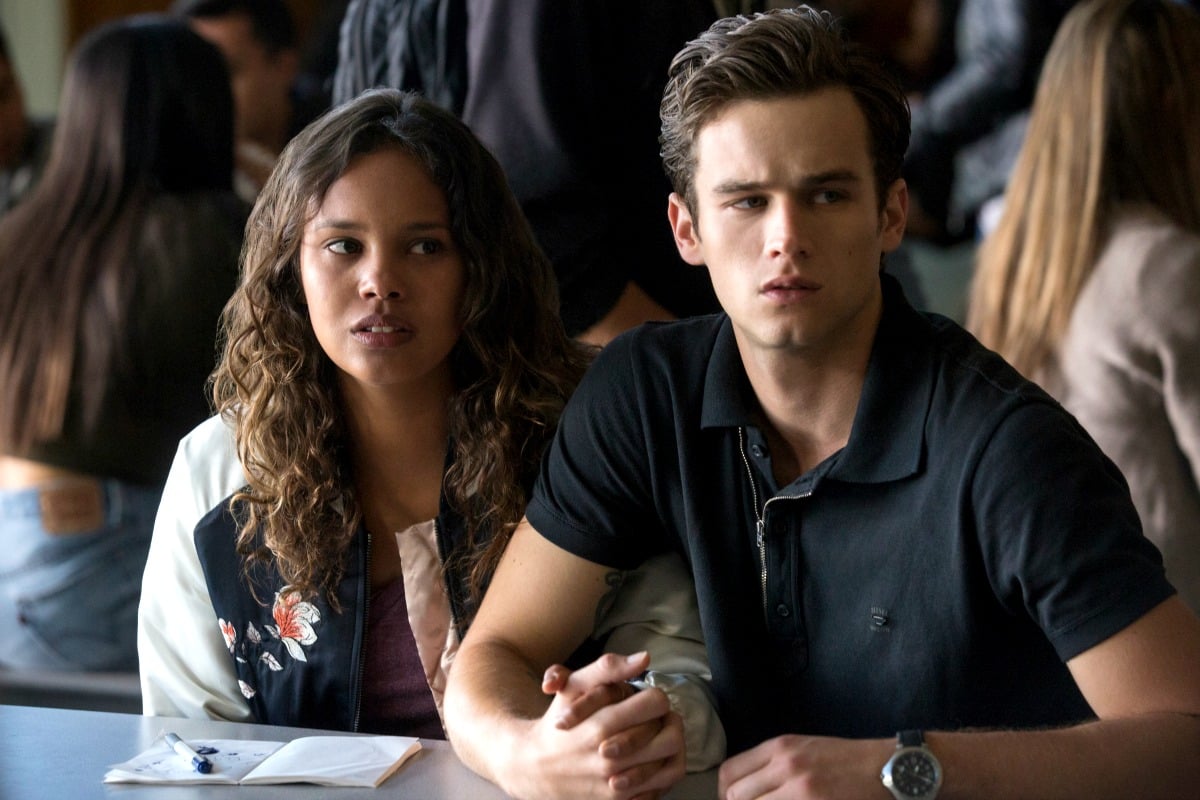
Content warning: This story deals with the subject of suicide, and will not be appropriate for all readers.
We are lucky enough to live in a world filled with cleverly crafted TV shows that have the power to ignite conversations and enact real change in the world.
The reality is, however, that no matter how hard it tries, Netflix’s 13 Reasons Why does not deserve a place on this TV game-changer list. In fact, it has become abundantly clear that even with the third season launching today this is a show that never should have aired in the first place.
The first season of 13 Reasons Why was based on on the novel of the same name by Jay Asher, and chronicles the aftermath of the suicide of 17-year-old Hannah Baker (played by Australian actress Katherine Langford).
On today’s episode of Mamamia’s daily entertainment podcast The Spill hosts Laura Brodnik and Kee Reece talk about why 13 Reasons Why should never have aired in the first place, along with the other top pop culture stories of the day.
In the first episode of the show her classmate and sometimes love interest Clay Jensen (Dylan Minnette) is given a mysterious box of seven cassette tapes recorded by Hannah and delivered two weeks after her death. The tapes detail why she decided to end her life and the people she holds to account for her decision.
Season two of the show traces the aftermath of Hannah’s death even further, focusing on a court case against a student who raped her before her suicide.

Top Comments
Have you WATCHED this show? At all? Season 3 was - to be honest - the best season yet. It was real, it dealt with real shit that real people face - daily. It looks at rape culture, toxic masculinity, sexuality and sexual abuse more so than ever before. The way the show, the writers and the characters handled Tyler's rape was absolutely beautiful if I do say so. It showed men everywhere that they are ALLOWED to be survivors - and should never feel like rape is just a woman's issue. Not only that - but as someone who was not 'traditionally' raped - I was able to relate so much (albeit distressing) to see somebody else go through a scenario where they were not raped traditionally, yet still be a survivor. Especially because a lot of non-traditional survivors are told that because it wasn't "actual" rape - it doesn't count.
I'm gonna be honest as well; seeing this show, seeing how well I related to Hannah and how lost I felt; it saved my life watching it. It was fucking hard - but it helped so much. i still feel so isolated, and alone, because; like Hannah, Tyler, Clay, Alex and countless other people - I am invisible, I am not 'popular', I actually only have one friend - but I know that it will eventually get better, and I also know what it looks like from the other side (other people's perspectives) if I did ever do anything about my feelings.
A serious journalist would have actually watched Season 3 before stating her opinion on it (as opposed to writing a piece based upon reading a synopsis and accounts of what others have said). I'm halfway through and think it's doing a really insightful job at looking at the complexities of toxic masculinity. Shame you didn't bother watching.